#charles de loire
Explore tagged Tumblr posts
Text

Pour ce trente-cinquième épisode de l'émission La Libre Antenne sur ERFM, le camarade Blaise et la section Égalité & Réconciliation des Pays de la Loire m'ont convié à évoquer la praxis du bien vivre en ville en ce début de XXIe siècle... Merci les gars.
Sommaire et musiques:
01- Introduction 4 min 10 : Devienne - Sonate pour flûte, basson et piano 02- Le Prince et la Cité 12 min 06 : Devienne - Sonate pour flûte, basson et piano 03- Style urbain français entre 1840 et 1940 16 min 44 : Rameau - Les Fêtes de Polymnie – Ouverture 04- Paris nomadisée 20 min 42 : RAMEAU - Le Temple de la Gloire - Ouverture 05- Envers du décor et ascenseur 24 min 49 : Marais - Alcione - Deuxième Air des Matelots et Matelotes 06- Les HLM des années 1950-60 27 min 40 : Grétry - Richard Cœur de Lion – Ouverture 07- Banlieue parisienne 29 min 44 : Grétry - La caravane du Caire – Ouverture 08- La ville dortoir 31 min 19 : Philidor – Tom Jones - Ouverture 09- L’esthétique désolée 35 min 38 : Méhul - Symphonie No. 2 en D majeur - Andante 10- Exigence contre décadence 39 min 34 : Saint-Saëns - Bacchanale 11- La propriété comme bouclier 43 min 20 : Saint-George - Ernestine – Ouverture 12- Londres et les magasins provisoires 46 min 44 : Berlioz - Marche hongroise 13- Le ministère de l’Embellissement 49 min 44 : Méhul - Adrien – Ouverture 14- L’ameublement masculin 52 min 37 : Gounod - Symphonie No. 2 - Allegro agitato 15- Le mobilier sprezzatura 56 min 10 : Fauré - Pavane - Andante Molto Moderato 16- Les magasins de mobilier 58 min 56 : Gossec - Symphonie en D Majeur - Minuetto & Trio 17- Le mode d’éclairage intérieur 1 h 02 min 16 : Fauré – Sicilienne 18- La campagne française violée 1 h 04 min 45 : Ravel - Le tombeau de Couperin – Prélude 19- Le rapport de l’homme à la campagne 1 h 13 min 13 : Jaubert - Le Jour se lève 20- Henri Sellier 1 h 16 min 17 : Saint-George - L’Amant anonyme - Ouverture I. Allegro presto 21- Les smart cities 1 h 21 min 00 : Gossec - Symphonie en D Majeur – Allegro 22- Conclusion 1 h 24 06 : New Order - The Himm
#ERFM#Paris#France#Tradition#Haussman#parisian style#parislife#architecture#Urbanisme#décoration#Décoration d'intérieur#Design#Podcast#Egaliteetreconciliation.fr#Pays de la Loire#Charles III#Prince Charles#Riad Sattouf#Sempé
13 notes
·
View notes
Photo
I can do Better
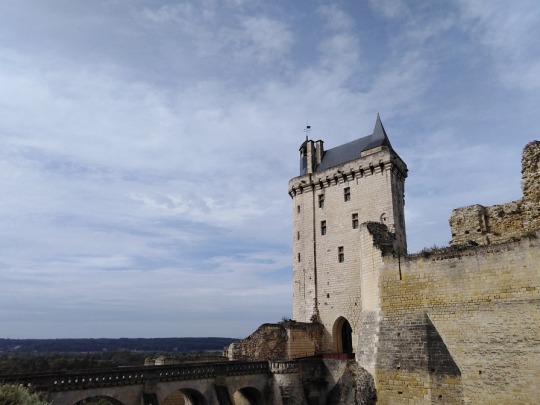


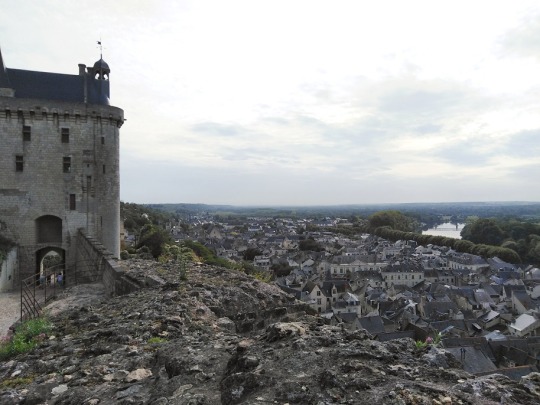
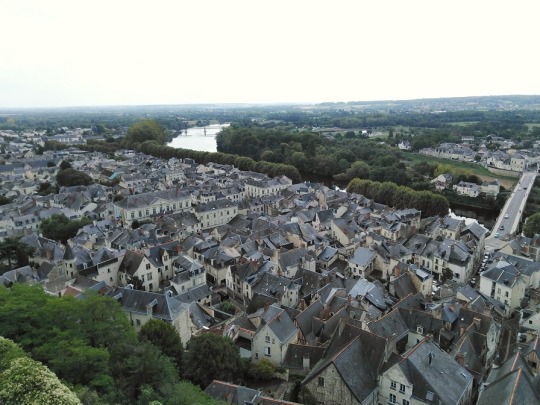
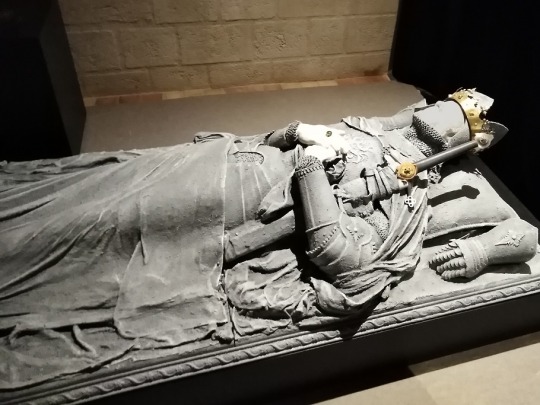

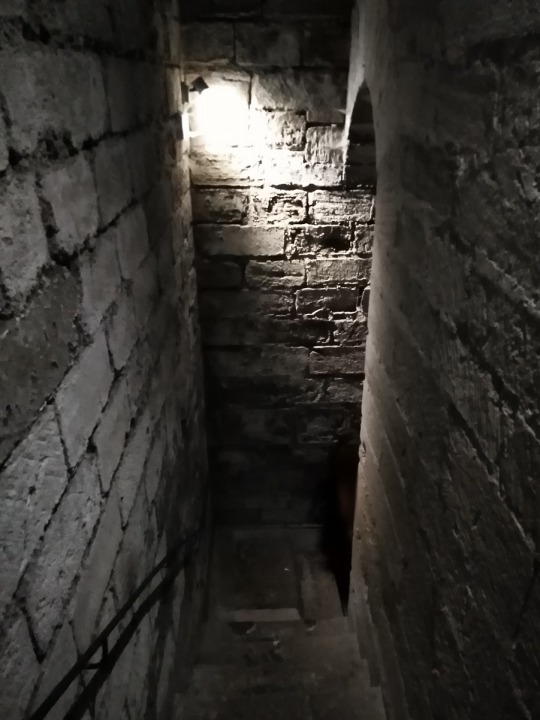


#château#castle#fort#forteresse#vallée de la Loire#Loire valley#Chinon#outside#dehors#architecture#Val de Loire#Indre-et-Loire#Touraine#tourisme#tourism#donjon#Poitou#fortifications#rempart#remparts#rampart#ramparts#Henri II#Aliénor d'Aquitaine#Eleanor of Aquitaine#Richard I the Lionheart#Richard Coeur de Lion#Charles VII#Louis XI
14 notes
·
View notes
Photo
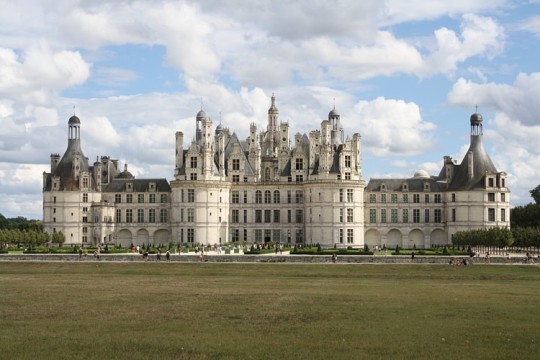
Château de Chambord
The Chateau de Chambord, located in the Loire Valley of Loir-et-Cher, France, was built between 1519 and 1547 CE. This fine French Renaissance building, although impressive in both size and architectural detail, was commissioned by Francis I of France (r. 1515-1547 CE) to function as a hunting lodge where the king and his entourage could pursue the abundant game in the surrounding forest. The chateau has several innovative design features which proved influential on other French monumental buildings in the 16th century CE, and it remains one of the most famous and visited buildings in France. Chateau de Chambord was listed by UNESCO as a World Heritage Site in 1981 CE.
Francis I
Francis I succeeded his cousin, Louis XII of France (r. 1498-1515 CE), when the king died without children in 1515 CE. Although Francis was, like Louis, preoccupied with an ongoing war with Italy, the French king remained determined to leave a lasting legacy of his reign. Buildings were his main focus and one of the gems of Francis' grand architectural project was the Chateau de Chambord. Located in the heavily forested Sologne region of the Loire Valley, the chateau was intended as a retreat where the king could escape the intrigues of the court and enjoy a spot of hunting, particularly of stags. Francis continuously expanded the estate through purchases so that it covered more than 2,500 hectares. The chateau was built on the site of a medieval hunting lodge or castle used by the counts of Blois and located on a tributary of the Loire River, the Cosson. This structure, evidence of which has been excavated below one of Chambord's towers, had a military function as attested by the documentary evidence of a garrison stationed there from 1356 CE. In the long history of the site, there is a clue to the name 'Chambord' as the Celts called the area cambo ritos meaning 'ford in the bend' and referencing a twist in the River Cosson.
As this vast expanse of forest now belonged to the Crown, so Francis was completely free to follow his royal architectural whim and build an extravagance from scratch. One of the great Renaissance patrons, Francis commissioned the services of many celebrated French and foreign artists. One such figure was the Italian engineer and architect Leonardo da Vinci (1452-1519 CE), who was perhaps involved in the preliminary design stage of Chateau de Chambord - especially the staircase which the master made several sketches of. However, as Leonardo died before construction really got underway, his involvement can only be speculated on. The architect most often credited with the triumph that is Chambord is Domenico da Cortona (1470-1549 CE). Domenico was Italian but had already made a name for himself working for King Charles VIII of France (r. 1483-1498 CE). Domenico likely created the detailed wooden model which the builders of the full-size chateau attempted to replicate in stone. Other names associated with the long construction process include the French architects Jacques Sourdeau, Pierre Neveu, and Denis Sourdeau, and, appointed by Francis I as superintendent of the actual construction, Francois de Pontbriant. Building began in 1519 CE and continued with some interruptions until the work was largely complete in 1540 CE. Further additions such as the Royal or East wing were added in 1544-5 CE and not finished until after Francis' death in 1547 CE.
Continue reading...
52 notes
·
View notes
Text

Liberty Leading the People (1830) 🎨 Eugene Delacroix 🏛️ The Louvre 📍 Paris, France
Perhaps Delacroix’s most influential and most recognizable paintings, Liberty Leading the People was created to commemorate the July Revolution of 1830, which removed Charles X of France from power. Delacroix wrote in a letter to his brother that a bad mood that had been hold of him was lifting due to the painting on which he was embarking (the Liberty painting), and that if he could not fight for his country then at least he would paint for it. The French government bought the painting in 1831, with plans to hang it in the room of the new king Louis-Philippe, but it was soon taken down for its revolutionary content. Lady Liberty was eventually the model for the Statue of Liberty, which was given to the United States 50 years later, and has also been featured on the French banknote.
Peint de septembre à décembre 1830 dans l'atelier loué par Eugène Delacroix au 15 (actuel n°17 ?) quai Voltaire, à Paris ; envisagé pour la deuxième Exposition au profit des blessés de Juillet 1830, galerie de la Chambre des Pairs (palais du Luxembourg), Paris, janvier 1831 (n° 508 du livret sous le titre "Une Barricade"), en réalité non prêté ; admis par le jury le 13 avril 1831 et exposé au Salon de 1831 (ouvert du 1er mai au 15 août), Paris, Musée royal (Louvre), n° 511 du livret sous le titre "Le 28 juillet. La liberté guidant le peuple" (n° 1380 du registre d'entrée des ouvrages au Salon, sous le titre "La Liberté guidant le peuple au 29 juillet" [sic], aux dimensions de "293 x 358 cm" cadre compris) ; envisagé comme achat de la Liste civile du roi Louis-Philippe Ier, en juillet 1831, au prix de 2 000 francs, finalement acheté à l'artiste par le ministère du Commerce et des Travaux publics en août 1831, au prix de 3 000 francs (en remplacement de la commande à Delacroix, au même prix, d'un tableau d'histoire ayant pour sujet "Le roi Louis-Philippe Ier visitant la chaumière où il logea près de Valmy, le 8 juin 1831", annulée suite au désistement de Delacroix) ; présenté au musée du Luxembourg, Paris, en 1832 et en 1833 (n° 160 du supplément au catalogue du musée) ; mis en réserve vers 1833-1834 ; confié à l'artiste vers 1839 qui le met en dépôt au domicile de sa tante, Félicité Riesener, et de son cousin Léon Riesener, à Frépillon (Val-d'Oise) ; réclamé à l'artiste par la direction des Musées nationaux (ministère de l'Intérieur) en mars 1848 (Delacroix demande à cette occasion une augmentation du prix de 7 000 francs, soit un total de 10 000 francs ; cette augmentation lui est refusée) ; prêté par Delacroix au peintre et entrepreneur lyonnais Alphonse Jame entre mai 1848 et mars 1849, en vue d'être exposé à Lyon, contre 1000 francs (payés en deux versements de 500 francs, le 11 septembre 1849 et le 8 mars 1850) ; rentré à Paris et restitué à l'administration en mars 1849 ; possiblement présenté au musée du Luxembourg, Paris, à partir de juin 1849 jusqu'en 1850 (mais absent du catalogue du musée) ; mis en réserve dans les magasins du musée du Louvre de 1850 à 1855 ; présenté à l'Exposition universelle, Palais de l'Industrie et des Beaux-arts, Paris, 1855, n° 2926 du livret ; mis en réserve dans les magasins des Musées impériaux de 1856 à 1863 ; présenté au musée du Luxembourg, Paris, de 1863 à 1874 ; déplacé du musée du Luxembourg au musée du Louvre en novembre 1874 ; inventorié pour la première fois, sous le n° "R.F. 129", en 1875 et présenté à partir de cette date dans la salle des États au musée du Louvre ; mis en sécurité pendant la Première Guerre mondiale au couvent des Jacobins, à Toulouse (Haute-Garonne) de 1914 à 1918 ; restauré par Lucien Aubert (nettoyage et réintégration de la couche picturale) à Paris en 1920 ; mis en sécurité pendant la Seconde Guerre mondiale au château de Chambord (Loir-et-Cher) en 1939, puis déplacé au château de Sourches, Saint-Symphorien (Sarthe), le 29 septembre 1943 ; rentré du château de Sourches au musée du Louvre, Paris, le 16 juin 1945 ; restauré par Raymond Lepage et Paul Maridat (rentoilage) et par Georges Zezzos (allègement et réintégration de la couche picturale), au musée du Louvre durant l'été 1949 ; présenté au musée du Louvre dans la salle Mollien d'octobre 1949 à 1969, puis en salle Daru de juin 1969 à juin 1994, puis en salle Mollien depuis décembre 1995 ; restauré par David Cueco et Claire Bergeaud (remplacement du châssis, pose de bandes de tension sur les bords de la toile) au musée du Louvre en janvier-février 1999 ; restauré par Bénédicte Trémolières et Laurence Mugniot (nettoyage et réintégration de la couche picturale) au musée du Louvre, d'octobre 2023 à avril 2024.
#Liberty Leading the People#Eugene Delacroix#Romanticism#1830#oil on canvas#painting#oil painting#The Louvre#Paris#France#Musée du Louvre#La Liberté guidant le peuple#french#art#artwork#art history
55 notes
·
View notes
Photo
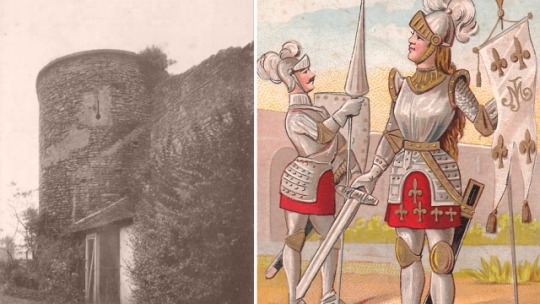
4 novembre 1429 : Jeanne d'Arc est victorieuse au siège de Saint-Pierre-le-Moûtier ➽ http://bit.ly/Siege-StPierreLeMoutier Blessée deux mois plus tôt aux côtés du roi de France lors du siège de Paris qui s'était soldé par un échec, Jeanne d'Arc se voit confier par Charles VII, qui toutefois ne participe cette fois pas à l'opération, le commandement d'une expédition visant à reprendre des villes de Haute-Loire aux Anglo-Bourguignons : mise en difficulté, elle refuse de se retirer et rend miraculeusement le courage à ses hommes qui reviennent à la charge avec furie
#CeJourLà#4Novembre#JeannedArc#Siège#SaintPierreLeMoûtier#Nièvre#HauteLoire#Guerre#CentAns#Angleterre#Anglais#Bourguignons#bataille#armée#histoire#france#history#passé#past#français#french#news#événement#newsfromthepast
7 notes
·
View notes
Text
They cancelled The Serpent Queen and I am so fucking mad!!
I'm french and guess where do I live? In the Loire Valley!! My hometown, Vendôme, is where The House of Bourbon (the one we see in the show) is from. Their full name is actually de Bourdon-Vendôme, because there are three different branches and if we only mention "Bourbon", it's kind of confusing because we don't know which branch we speak of and Bourbon-Vendôme is the one Henri IV is from. Which means, the character that we see in the show lived in the castle located next to my elementary school! I was young but I can still see and hear my teacher telling my class "This castle next to us was a big deal.". Henri IV didn't live here but he came a few times, especially when his mother, Jeanne d'Albret, died and was buried here (along with Antoine and their first born son (and Louis, Antoine's brother)). So when Jeanne died in the show, in the story, they technically should have been in my hometown (and Antoine and Louis should have been already dead lol). Same as when Antoine and Louis went back home to their dads. François I, François II, Marie Stuart, Charles IX and Catherine came here. Sadly, the castle is just ruins now... But it makes me sad that they never mentioned the name of the town once. Even Reign mentioned it. I mean, everyone knows that Reign was more fiction than facts but still, they mentioned Vendôme in one of the latest episodes of the show and it's still one of my proudest moment 🥹
Since I live in Vendôme, it means that I live 30 min away from le Château de Chambord, where they filmed most of the show. I love going there whenever I can but sadly, I never got the chance to go there when they were filming... 💔 It was weird and funny to see how they edited the outsides of the castle. Some editing didn't make any sense but I get it. Also, the big gardens are from a completely different castle located in Villandry. So it was weird to see Chambord edited in the background. And it didn't make any sense when we would see Chambord fully and the gardens weren't there, haha.
Also, le Château d'Amboise was used two times and they kinda disrespected it 😅 I'm not entirely serious when I say this but I kinda I am. The first time is in the season one finale, when Mary "arrives" in Scotland. The second that I saw the location I said "Oh, Amboise" and then I saw the ocean next to it and realised that it was supposed to be Scotland 😭 The second time was in season two when Catherine visits Diane (who is still pretty young and most importantly, miraculously still alive in 1572 😭). When Diane and Catherine talk we discover that they are in "Anet" (where she died in 1566). I was so happy when they mentioned where they were in the story but I was like "but, but, it's Amboise, guys 😭". It's funny and confusing for me because I know those castles but it's perfectly fine for an audience who has no clue. Also, le Château d'Anet is a private property, so I don't know if they would have allowed the show to come and filmed there, but also I've seen a documentary a few months ago and the owner seems very sweet, so I don't know. They also used Amboise, the town, to be Paris, where Catherine's brother was supposed to build le Palais des Tuileries.
And last but not least, I wanna talk about Blois (20 min away from me, next to Chambord) Oooh, Blois is probably my biggest heartbreak from that show. In season one, it made sense to be in Chambord because this castle was François I's baby but he lived there for only a month. Henri II didn't live there but kept the constructions going. When Henri II died, François II didn't live there. Charles IX didn't live there either but just like his father before him, he kept the constructions going and consolidated it. Henri III and Henri IV didn't live there and didn't do anything to it (it's such an Anjou and Henri behavior if you ask me haha). But if Henri II, François II, Charles IX and Henri III didn't live there, then where did they live, you ask?! Well, they lived in BLOIS. Which means that the whole show should have been happening in le Château de Blois, not Chambord. Y'all have no idea how excited I was when I heard that season 2 was filming in Blois. I thought, finally, they are going to aknowledge the most important castle of the Valois! I mean they actually all lived there and this is where Catherine died!! When I say that that castle is important to the Valois' story, it's because it is. Do I need to tell you how disappointed I was when I saw season 2 last week? A) I was expecting multiple scenes in the castle and well, that didn't happen. B) I had to wait the very last episode to see what they filmed there. C) THEY DIDN'T EVEN FILMED IN THE CASTLE!!! We see all the Protestants walking across the bridge, we see a few streets that I'm not even sure if it's actually Blois and then we see the castle, in the background, behind all the protestants who are looking at a cathedral that is not even located there. THEY EDITED THE CATHEDRAL OF TOURS IN BLOIS 😭 It's not fair. Honestly, all the editing stuff didn't really bother me. I understand that they did whatever they needed to for the aesthetic of the show. But not mentioning once the name of the town that was important to the true Valois Kings and Queens is something that I truly don't understand.
The show is about the French history, is filmed in France and guess what? We had NO WHERE TO WATCH IT IN FRANCE. The show arrived like a week ago on Max and it's been n°5 in the top 10 since then. French people want to see their country in a show and support it, we have the proof and THEY CANCEL IT?! I am so upset. They could have give it a third and last season to wrap it up. Season 2 was so much better than season 1. The Valois siblings did bring so much more depth, especially Anjou.
I CAN'T BELIEVE THAT I'M LOSING KING ANJOU. The potential that he had was insane.
Okay, I'm gonna shut up now and cry about it 😭
10 notes
·
View notes
Text
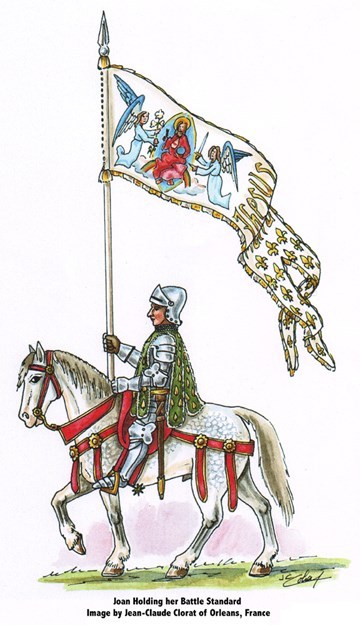
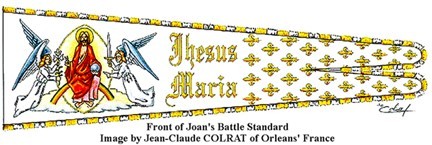

June 12th 1429 saw an army led by Joan of Arc defeat the English at the Battle of Jargeau.
I've posted about Joan of Arc and indeed the 100 year war before, the Scots were heavily involved with both the Maid of Orléans and the long conflict between France and England.
Joan had helped lift the Siege of Orléans the previous month, where Scots are known to have been present, Jargeau was a small town on the southern bank of the Loire river in central France, about ten miles east of Orléans., this was Joan's first offensive action during her short life.
While I can find no evidence that there were Scots at the battle, I would be surprised that there would have been none, they would however have been ordinary foot soldiers , certainly there were no Knights.
So what's the point of the post? Well just another wee connection with Scotland had with Jeanne d’Arc, as she is known in her native France, the banner she carried into battle was painted by a Scot called Hamish Power or Hauves Poulvoir as the French knew him. Joan asked Hamish to paint her her standard and pennon, to her designs, Power has been described as a displaced Scot, living in Tours.
The standard was 3 feet wide and 12 feet long. The image was a field of golden lilies with an image of "the King of Heaven seated upon a rainbow, and holding in one hand the world in the form of a globe, the other being raised in a gesture of benediction. Before Him, to right and to left, were the kneeling figures of Michael and Gabriel, each presenting to Him a fleur-de-lys. Joan's motto "Jhesus-Maria was written in letters of gold on this rough material. " on the reverse was " an escutcheon: a field of azure charged with a silver dove holding in its beak a streamer with the words "De par le Roy di Ciel." The standard was the "fluttering sign" to which her army could rally when dispersed in confusion of battle.
The Pennon depicted the Annunciation, the Virgin Mary receiving from the Archangel Gabriel a double lily, which was the twofold symbol of France and of chastity. It was carried by one of her squires to mark her position in the field.
Joan spoke about the banners at her trial, testifying that it had been created by the command of God and that she was given instructions about the design by Saint Catherine and Saint Margaret who told her to take it and bear it boldly.
When Joan and the dauphin rode to the Reims Cathedral for the coronation on July 17, 1429, she rode with a Scots Guard of 60 men.
She later stated that she preferred to carry her banner into battle so that she would not have to kill anyone. "I loved my banner forty times better than my sword. And when I went against my enemy, I carried my banner myself, lest I kill any. I have never killed anyone."
Joan carried her banner at the coronation of Charles VII in the Cathedral of Reims and was later questioned at her trial about having it there to which she responded: "It had borne the burden; it was quite right that it receive the honour."
You can find more about the remarkable lady that Joan of Arc was at this great site below, the klink takes you to part of her testimony when she was found guilty of witchcraft and heresy by pro-English bishop Pierre Cauchon, who sentenced her to be burnt at the stake. She died on 30th May 1431 aged just 19.
23 notes
·
View notes
Text

Quartier Charles de Gaulle, Charolles, Saône-et-Loire.
2 notes
·
View notes
Text










Chateau de Chenonceau is located in the Loire Valley near the small village of Chenonceaux in France. The castle sits on the Cher River and was built upon a medieval castle from the 12th and 13th centuries; only the dungeon remains. The current castle was built in the early 16th century by Catherine Briconnet and her husband, Thomas Bohler, Chamberlain for King Charles VIII. In 1535, the castle was seized from Bohler’s son by King Francis I for unpaid debts to the Crown. In 1547, King Henry II gifted the castle to his mistress Diane de Poitiers. Poitiers had the arched bridge built to join the castle to the opposite bank. She also had extensive gardens and fruit trees added to the property. After King Henry II’s death, his widow Catherine de Medici decided to send Diane to Chateau Chaumont, and Catherine set up residence at Chateau de Chenonceau. As regent of France, Catherine had parties and entertained at the estate. In 1560, the first firework display seen in France was at the estate. She also extended the bridge and added rooms. The castle has a long, fascinating history and has been held by many royals, royal mistresses, and famous people. Louise Dupin saved the castle from destruction by the Revolutionary Guard during the French Revolution, arguing that the bridge across the river was essential for travel and commerce. In 1864, an heiress purchased the estate and had it restored, but her finances depleted, and the castle was seized and sold. In 1913, Henri Menier (the Menier family is famous for their chocolates) purchased the estate. The Menier family currently owns the estate. In WWI, the gallery was used as a hospital ward. In 1940, during WWII, the castle was bombed by the Germans. One side of the Cher River was the free zone, so the castle became occupied by the Germans. In 1944, while under German occupation, the allies bombed the estate, hitting the chapel. In 1951, the Menier family had the estate restored. The interior has a 60-meter gallery, a grand hall, a library, a drawing-room, a wine cellar, a soaring chapel with stained glass windows, and much more. Chateau de Chenonceau boasts a collection of furniture, tapestries, and paintings from masters like Rubens, Poussin, and Van Dyck. There is a restaurant in the former orangery and a terrace tearoom. The exterior has numerous gardens, 19th century caryatids, fountains, raised terraces, ornamental basins, a gazebo, and a 2,000-yew tree garden maze. Chateau de Chenonceau is open to the public for tours and as a venue. It is one of the most visited chateaus in France. #castles #France #LoireValley #ChateaudeChenonceau #Chenonceaux
1 note
·
View note
Text
Charles Ferdinand Gambon (Vida y obra)
Charles Ferdinand Gambon (Vida y obra) Charles-Ferdinand Gambon, Charles Ferdinand Gambon. (1820-1887). Nació el 19 de marzo de 1820 en Bourges, Cher, Centro del valle del Loira, (Francia) y murió el 16 de septiembre de 1887 en Cosne-sur-Loire, Nièvre, Bourgogne-Franche-Comté, (Francia). Fue una gran figura republicana del siglo XIX, demócrata-socialista, representante del pueblo en 1848,…
0 notes
Photo

Château de Chambord
The Chateau de Chambord, located in the Loire Valley of Loir-et-Cher, France, was built between 1519 and 1547 CE. This fine French Renaissance building, although impressive in both size and architectural detail, was commissioned by Francis I of France (r. 1515-1547 CE) to function as a hunting lodge where the king and his entourage could pursue the abundant game in the surrounding forest. The chateau has several innovative design features which proved influential on other French monumental buildings in the 16th century CE, and it remains one of the most famous and visited buildings in France. Chateau de Chambord was listed by UNESCO as a World Heritage Site in 1981 CE.
Francis I
Francis I succeeded his cousin, Louis XII of France (r. 1498-1515 CE), when the king died without children in 1515 CE. Although Francis was, like Louis, preoccupied with an ongoing war with Italy, the French king remained determined to leave a lasting legacy of his reign. Buildings were his main focus and one of the gems of Francis' grand architectural project was the Chateau de Chambord. Located in the heavily forested Sologne region of the Loire Valley, the chateau was intended as a retreat where the king could escape the intrigues of the court and enjoy a spot of hunting, particularly of stags. Francis continuously expanded the estate through purchases so that it covered more than 2,500 hectares. The chateau was built on the site of a medieval hunting lodge or castle used by the counts of Blois and located on a tributary of the Loire River, the Cosson. This structure, evidence of which has been excavated below one of Chambord's towers, had a military function as attested by the documentary evidence of a garrison stationed there from 1356 CE. In the long history of the site, there is a clue to the name 'Chambord' as the Celts called the area cambo ritos meaning 'ford in the bend' and referencing a twist in the River Cosson.
As this vast expanse of forest now belonged to the Crown, so Francis was completely free to follow his royal architectural whim and build an extravagance from scratch. One of the great Renaissance patrons, Francis commissioned the services of many celebrated French and foreign artists. One such figure was the Italian engineer and architect Leonardo da Vinci (1452-1519 CE), who was perhaps involved in the preliminary design stage of Chateau de Chambord - especially the staircase which the master made several sketches of. However, as Leonardo died before construction really got underway, his involvement can only be speculated on. The architect most often credited with the triumph that is Chambord is Domenico da Cortona (1470-1549 CE). Domenico was Italian but had already made a name for himself working for King Charles VIII of France (r. 1483-1498 CE). Domenico likely created the detailed wooden model which the builders of the full-size chateau attempted to replicate in stone. Other names associated with the long construction process include the French architects Jacques Sourdeau, Pierre Neveu, and Denis Sourdeau, and, appointed by Francis I as superintendent of the actual construction, Francois de Pontbriant. Building began in 1519 CE and continued with some interruptions until the work was largely complete in 1540 CE. Further additions such as the Royal or East wing were added in 1544-5 CE and not finished until after Francis' death in 1547 CE.
Continue reading...
32 notes
·
View notes
Text
Events 8.12 (before 1940)
1099 – First Crusade: Battle of Ascalon Crusaders under the command of Godfrey of Bouillon defeat Fatimid forces led by Al-Afdal Shahanshah. This is considered the last engagement of the First Crusade. 1121 – Battle of Didgori: The Georgian army under King David IV wins a decisive victory over the famous Seljuk commander Ilghazi. 1164 – Battle of Harim: Nur ad-Din Zangi defeats the Crusader armies of the County of Tripoli and the Principality of Antioch. 1323 – The Treaty of Nöteborg between Sweden and Novgorod Republic is signed, regulating the border between the two countries for the first time. 1492 – Christopher Columbus arrives in the Canary Islands on his first voyage to the New World. 1499 – First engagement of the Battle of Zonchio between Venetian and Ottoman fleets. 1624 – Charles de La Vieuville is arrested and replaced by Cardinal Richelieu as the French king's chief advisor. 1676 – Praying Indian John Alderman shoots and kills Metacomet, the Wampanoag war chief, ending King Philip's War. 1687 – Battle of Mohács: Charles of Lorraine defeats the Ottoman Empire. 1765 – Treaty of Allahabad is signed. The Treaty marks the political and constitutional involvement and the beginning of Company rule in India. 1788 – The Anjala conspiracy is signed. 1793 – The Rhône and Loire départments are created when the former département of Rhône-et-Loire is split into two. 1806 – Santiago de Liniers, 1st Count of Buenos Aires re-takes the city of Buenos Aires, Argentina after the first British invasion. 1831 – French intervention forces William I of the Netherlands to abandon his attempt to suppress the Belgian Revolution. 1851 – Isaac Singer is granted a patent for his sewing machine. 1865 – Joseph Lister, British surgeon and scientist, performs the first antiseptic surgery. 1883 – The last quagga dies at the Natura Artis Magistra, a zoo in Amsterdam, Netherlands. 1898 – The Hawaiian flag is lowered from ʻIolani Palace in an elaborate annexation ceremony and replaced with the flag of the United States to signify the transfer of sovereignty from the Republic of Hawaii to the United States where it is formally recognized as Hawaii. 1914 – World War I: The United Kingdom and the British Empire declare war on Austria-Hungary. 1914 – World War I: The Battle of Halen a.k.a. Battle of the Silver Helmets a clash between large Belgian and German cavalry formations at Halen, Belgium.
0 notes
Photo

4 novembre 1429 : Jeanne d'Arc est victorieuse au siège de Saint-Pierre-le-Moûtier ➽ http://bit.ly/Siege-StPierreLeMoutier Blessée deux mois plus tôt aux côtés du roi de France lors du siège de Paris qui s'était soldé par un échec, Jeanne d'Arc se voit confier par Charles VII, qui toutefois ne participe cette fois pas à l'opération, le commandement d'une expédition visant à reprendre des villes de Haute-Loire aux Anglo-Bourguignons : mise en difficulté, elle refuse de se retirer et rend miraculeusement le courage à ses hommes qui reviennent à la charge avec furie
#CeJourLà#4Novembre#JeannedArc#Siège#SaintPierreLeMoûtier#Nièvre#HauteLoire#Guerre#CentAns#Angleterre#Anglais#Bourguignons#bataille#armée#histoire#france#history#passé#past#français#french#news#événement#newsfromthepast
18 notes
·
View notes
Text
Loire Valley
Loire Valley hay còn được gọi là Vallée de la Loire - một vùng trồng nho nổi tiếng và quan trọng đối với rượu vang Pháp. Nằm dọc theo dòng sông Loire, khu vực này bao gồm các tỉnh từ Pays Nantais ở phía tây đến Sancerre và Pouilly-Fumé ở phía đông. Với đa dạng địa hình, khí hậu và giống nho trồng, Loire Valley dễ dàng nằm trong TOP những vùng rượu vang phong phú nhất và có sự đa dạng về các loại rượu vang.
Tổng quan về Loire Valley Loire Valley là một trong những dòng rượu vang nổi tiếng và được đánh giá cao trên toàn cầu. Với lịch sử lâu đời, vùng trồng nho này đã tạo ra những sản phẩm vang độc đáo và có chất lượng tuyệt vời.
Loire Valley nằm ở đâu? Loire Valley là con sông có độ dài lớn nhất của Pháp và nó là khu vực bao gồm hàng trăm km từ miền Trung nước Pháp, chảy về phía Bắc bao quanh Saint-Pourcain. Sau đó bắt đầu quay về phía tây ngay phía bắc của vùng rượu vang Sancerre và qua những vườn nho của Touraine, Anjou, Saumur và ra bờ biển phía tây, nơi nó chảy vào Đại Tây Dương gần Nantes và vùng Muscadet.
Sơ lược về lịch sử Loire Valley Vùng rượu vang Loire Valley có một lịch sử lâu đời và phong phú trong ngành sản xuất rượu vang. Được coi là một trong những vùng trồng nho cổ xưa nhất của Pháp, Loire Valley đã được ghi nhận về sản xuất rượu vang từ thời Trung Cổ.
Trong suốt lịch sử, thung lũng Loire đã trải qua các giai đoạn thịnh vượng và suy thoái. Thế kỷ 19 chứng kiến sự phục hưng cho rượu vang Loire Valley sau cuộc khủng hoảng do chiến tranh và cơn bệnh phá hủy nho phá. Các nhà sản xuất đã thực hiện nghiên cứu và đầu tư vào cải tiến công nghệ sản xuất rượu vang, giúp nâng cao chất lượng sản phẩm và định hình lại danh tiếng của vùng.
Ngày nay, Loire Valley là một trong những vùng trồng nho quan trọng và nổi tiếng nhất ở Pháp. Sự đa dạng của dòng rượu, sự tinh tế và chất lượng cao đã đóng góp vào việc thiết lập vị thế độc đáo của Loire Valley trong thế giới rượu vang, tiếp tục thu hút sự quan tâm của các nhà sản xuất rượu vang và người yêu rượu với những chai rượu tuyệt vời mà nó mang đến.
Những sự kiện quan trọng trong lịch sử rượu vang Loire Valley Như đã nói, Loire Valley được biết đến với lịch sử trồng nho và sản xuất rượu vang rất lâu đời. Các sự kiện quan trọng xảy ra từ quá khứ cho đến hiện tại đã đóng góp một phần không nhỏ vào sự phát triển và danh tiếng của loại rượu vang này. Dưới đây là một số sự kiện quan trọng trong lịch sử rượu vang Loire Valley:
Thế kỷ thứ 5: Rượu vang Loire Valley bắt đầu được sản xuất từ thời kỳ La Mã.
Thế kỷ thứ 14 - 15: Vua Pháp Charles VII khám phá ra vùng trồng nho Sancerre và tạo điều kiện thuận lợi cho việc mở rộng việc trồng nho ở Loire Valley.
Thế kỷ thứ 19: Các nhà sản xuất rượu vang Loire Valley bắt đầu chú trọng vào việc cải thiện chất lượng rượu và xây dựng các hầm rượu để lưu trữ.
Năm 1936: Loire Valley trở thành một trong những vùng trồng nho đầu tiên được công nhận tại Pháp.
Những năm 1990: Rượu vang Loire Valley tiếp tục nổi tiếng và nhận được sự công nhận toàn cầu, đặc biệt là các loại rượu trắng.
Địa lý và khí hậu vùng Loire Valley Bắt đầu từ bờ biển Đại Tây Dương, thung lũng Loire kéo dài 274 dặm về phía đông dọc theo sông Loire.Sông Loire chảy từ phía Tây sang Đông và được chia thành ba vùng chính: Vùng hạ lưu Pays Nantais; vùng giữa Anjou, Saumur và Touraine; và thượng nguồn Sancerre và Pouilly Fumé.
Đương nhiên, với diện tích rộng lớn này, các nhà sản xuất rượu vang tại đây cũng chịu ảnh hưởng của nhiều kiểu khí hậu đa dạng tùy thuộc vào vị trí. Do đó, đặc tính của rượu vang ở Loire Valley khác nhau tùy thuộc vào nơi sản xuất. Jean-Christian Bonnin, nhà sản xuất rượu vang và chủ sở hữu thế hệ thứ tư của gia tộc Bonnin, cho biết: “Địa lý, đất đai và khí hậu là những yếu tố tạo nên thổ nhưỡng lý tưởng của Loire Valley và chúng khác nhau giữa các tiểu vùng”.
Hạ lưu sông Loire Pays Nantais, nằm trên bờ Đại Tây Dương, có khí hậu biển với mùa thu - đông ôn hòa, mùa hè nóng ẩm. Rượu vang ở đây có vị chát rõ rệt và thơm hương cam quýt cùng khoáng chất.
Châu thổ trung tâm Đi về phía đông đến khu vực giữa bao gồm Anjou, Saumur và Touraine, bạn sẽ thấy mình ở nơi có khí hậu được che chắn bởi những ngọn đồi Saumur. Saumur chịu ảnh hưởng của khí hậu đại dương ôn hòa lai với khí hậu lục địa: nhiệt độ không bao giờ quá cao hoặc quá thấp, biên độ nhiệt vừa phải. Đó hẳn là một miền đất hứa cho các nhà sản xuất rượu vang Chenin Blanc và Cabernet Franc. Do đó, rượu vang hồng và vang đỏ thể hiện hương thơm của trái cây và hoa đỏ. Ngược lại, vang trắng nổi bật với hương bạch hoa, mật ong với chút trái cây nhiệt đới.
Thượng nguồn sông Loire Vùng đất này bao gồm các nhà sản xuất rượu vang ở Sancerre và Pouilly Fume. Nơi đây phải hứng chịu đợt lạnh đậm vào mùa đông và mùa hè ấm áp hơn. Khí hậu lục địa này rất lý tưởng cho sự sinh trưởng của nho sAuvignon Blanc, cho ra nước rượu với hương thơm tươi trẻ và cấu trúc mỏng nhẹ.
Thổ nhưỡng tuyệt vời của Loire Valley Xavier Amirault, nhà sản xuất rượu và chủ sở hữu của Domaine Amirault ở Saint-Nicolas-de-Bourgueil, Pháp, cho biết: “Khí hậu rất quan trọng, nhưng loại đất quyết định tất cả khi nói đến hương vị của rượu”. Đất thay đổi theo từng vùng và có ảnh hưởng lớn đến giống nho và phương pháp trồng nho. Hầu hết các loại đất bạn sẽ tìm thấy trong khu vực là đá vôi Kimmeridgian, đất sét, cát/sỏi, đá phiến, đá lửa, đá granit, gneiss (đá), phấn và tuffeau.
Đá vôi Kimmeridgian: Được tìm thấy ở nhiều nơi trong vùng, loại đất này bổ sung chất lượng khoáng chất đáng chú ý cho rượu vang, đặc biệt ở Sancerre và Pouilly-Fume.
Đất sét và Loam: Những loại đất này, thường được tìm thấy ở Chinon và Bourgueil, góp phần sản xuất ra các loại rượu vang đậm đà và đậm đà hơn, đặc biệt là đối với các loại rượu vang đỏ như Cabernet Franc.
Đá lửa (Silex): Đặc biệt xuất hiện nhiều ở Pouilly-Fumé, đất đá lửa được biết là mang lại đặc tính ám khói cho rượu vang, đặc biệt là các dòng vang Sauvignon Blanc.
Đá phiến và sa thạch: Phổ biến ở Anjou. Loại đất này tạo điều kiện thuận lợi cho việc sản xuất rượu vang có hương vị trái cây rõ rệt và cấu trúc trang nhã.
Đá vôi Tuffeau: Tìm thấy nhiều ở Vouvray. Thường được lựa chọn để sản xuất vang Chenin Blanc nhẹ nhàng, tươi trẻ, hương vị sống động và có tuổi thọ cao với vị chua và mùi thơm phức tạp.
Đặc điểm nổi bật của rượu vang Loire Valley Loire Valley có nhiều đặc điểm riêng biệt, tạo nên vị trí độc đáo riêng mình trong thế giới rượu vang. Vùng sản xuất này nổi tiếng với sự đa dạng của các dòng rượu, bao gồm vang trắng, vang đỏ, vang hồng hay rượu vang sủi, mang đến cho người yêu rượu những lựa chọn phù hợp với sở thích và khẩu vị của mình.
Bên cạnh đó, rượu vang Loire Valley được đánh giá cao về sự thanh lịch và tinh tế. Đặc biệt, loại rượu vang trắng từ khu vực này thường có hương thơm phức tạp, độ axit cân đối và hậu vị kéo dài, tạo nên những trải nghiệm tuyệt vời cho người thưởng thức. Điều này cũng phản ánh sự kháng kiềm cao trong rượu vang Loire Valley, giúp tạo ra sự cân bằng tuyệt vời, giúp cho rượu vang Loire Valley trở thành lựa chọn tuyệt vời để kết hợp với các món ăn nhẹ và tinh tế.
Rượu vang Loire Valley còn được đánh giá cao về khả năng phù hợp với thực phẩm. Rượu vang trắng thích hợp kết hợp với các món hải sản, phô mai và rau sống, nhấn mạnh hương vị tươi mát và độ axit. Trong khi đó, rượu vang đỏ có thể tạo sự kết hợp ăn ý với các món thịt đỏ và gia cầm, mang lại hương vị đậm đà và nồng độ tannin phù hợp.
Một ưu điểm khác của rượu vang Loire Valley là giá trị và chất lượng. So với những khu vực trồng nho nổi tiếng khác, rượu vang từ Loire Valley thường có giá trị tốt và đáng giá. Điều này được thể hiện thông qua sự đầu tư vào chất lượng và quy trình sản xuất, giúp mang đến những chai rượu với chất lượng cao và giá trị hấp dẫn cho người tiêu dùng.
Một số dòng vang Loire Valley nổi tiếng nhất định bạn phải thử
Vang Pháp Attitude Pascal Jolivet Pinot Noir: Sự mịn màng của rượu vang đỏ Attitude Pascal Jolivet Pinot Noir làm nên một nét đẹp cân bằng cá tính. Với sắc thái tinh tế hòa lẫn trong kết thúc lâu dài, rượu vang cung cấp nhiều hương vị đặc trưng của trái cây đỏ, anh đào và quả đen. Rượu vang trở nên thanh lịch hơn nhờ kết cấu cân bằng với dấu ấn đậm đà của gia vị cay. Những cây nho Pinot Noir chín được làm theo phong cách cổ điển khi lấy từ thung lũng Loire.
Vang Pháp La Chaume Orfeo Val de Loire Vendee: Dấu ấn đặc sắc của hương vị trong rượu vang La Chaume Orfeo Val de Loire Vendee làm nên ấn tượng của quả mọng đen, cam thảo và tiêu đen. Sức mạnh độc đáo của lượng trái cây tươi làm nên nét đẹp năng động cho loại rượu có tuổi khá lâu này. Rượu trở nên độc đáo hơn nhờ dư vị phức tạp có sẵn trong tiềm thức người dùng. Sức mạnh của hương thơm để lại phong cách đầy đủ ở điểm cuối vang.
Vang Pháp Domaine du Puy Chinon: Là một loại rượu vang nhẹ nhàng cung cấp sự tươi mát cho người thưởng thức, vang Pháp Domaine du Puy Chinon có cường độ mùi thơm rõ ràng. Dễ dàng thưởng thức ở nhiệt độ 15 đến 16 độ. Được đánh giá là một loại vang nhẹ đi kèm cùng nhiều món ăn từ thịt trắng nướng và xà lách phong phú.
Bảng giá rượu vang thung lũng Loire Rượu vang Loire Valley trên thị trường hiện nay có giá thành dao động từ 500.000vnđ, tùy thuộc vào phân khúc và loại sản phẩm mà mức giá này có thể thay đổi. Tại Rượu Tốt, chúng tôi đảm bảo luôn mang đến quý khách sản phẩm chính hãng, giấy tờ CO - CQ đầy đủ, với giá thành mềm dẻo, chiết khấu cao ngay cả khi mua lẻ. Đặc biệt có nhiều ưu đãi hấp dẫn khi quý khách mua số lượng từ 1 thùng (6 chai).
Rượu vang Loire Valley với chất lượng thượng hạng, được sản xuất bởi những đôi bàn tay nghệ thuật và đến từ nước Pháp xa xôi, đây quả là một mức giá xứng đáng phải không nào. Những giá trị tuyệt vời mà hương vị của loại vang này đem đến sẽ giúp cho bạn có được một trải nghiệm không thể quên.
Những giống nho nổi tiếng ở Loire Valley Các giống nho và phong cách sản xuất rất khác nhau trên khắp Loire Valley. Tuy nhiên, ngoài được biết đến nhiều nhất với vang trắng kiểu trái cây thì các dòng vang đỏ cũng khá thu hút sự chú ý của người tiêu dùng rượu vang toàn cầu.
Rượu vang đỏ Loire Valley
Cabernet Franc: Đây là loại nho đặc trưng lâu đời cho rượu vang đỏ của Saumur và Touraine ở Thung lũng Loire. Các loại rượu vang mà nó sản xuất nhẹ hơn rượu của Bordeaux. Điều này một phần là do khí hậu mát mẻ hơn của Thung lũng Loire. Những loại rượu này đã nổi tiếng với những loại rượu tươi mát, trẻ trung nên được uống sớm.
Gamay: Là chủ đạo của rượu vang hồng từ Loire Valley được sản xuất ở Anjou và Saumur. Đôi khi nó cũng được sử dụng trong pha trộn rượu vang đỏ của những khu vực đó. Có một số loại rượu vang trong vùng được làm hoàn toàn từ loại nho này như 'Touraine Gamay'.
Pinot Noir: Loại nho này mang lại cho chúng ta màu đỏ phổ biến của Burgandy cũng phát triển tốt ở Loire Valley với màu đỏ nhạt của Sancerre và Cheverny.
Rượu vang trắng Loire Valley
Chenin Blanc: Rượu vang với loại nho này có lẽ là đồng nghĩa nhất với Thung lũng Loire. Đặc tính linh hoạt của nó có nghĩa là nó được tìm thấy trong bất cứ thứ gì từ khô đến ngọt nhất của rượu vang và nó rất tốt để làm rượu vang sủi bọt.
Sauvignon Blanc: Những trái nho này là nguyên nhân tạo ra các loại rượu vang Sancerre và Pouilly-Fume phổ biến và nổi tiếng thế giới , được phân loại là “Trung tâm Vins du”.
Muscadet: Loại nho này được trồng quanh vùng cực tây của Loire Valley vì nó đã được chứng minh là giống tốt nhất để đối phó với sương giá mùa đông mà khu vực dễ bị ảnh hưởng. Các loại rượu vang từ những trái nho này được bán trên thị trường dưới cùng một cái tên.
Chardonnay: Ở Thung lũng Loire, nho Chardonnay được sử dụng chủ yếu như một loại nho pha trộn để tăng thêm sự phong phú cho rượu vang sủi bọt và đôi khi chúng được sử dụng trong rượu vang trắng Saumur và Anjou nhưng chỉ chiếm một tỷ lệ nhỏ trong hỗn hợp thành phẩm.
Mua rượu vang Loire Valley chính hãng giá rẻ Với một thị trường phát triển mạnh mẽ nhưng đầy biến động như ngày nay thì không quá khó để có thể sở hữu một chai vang bất kỳ, nhưng có lẽ sẽ khó để có thể đánh giá chính xác chất lượng của sản phẩm. Tại Rượu Tốt, chúng tôi tự tin là địa điểm chuyên cung cấp các sản phẩm rượu vang Loire Valley nói riêng và đa dạng rượu vang nói chung với giấy tờ nhập khẩu, thông số và tem mác đầy đủ, nhằm đưa đến tay khách hàng những sản phẩm an toàn, cao cấp và chính ngạch nhất. Bên cạnh đó, còn có đa dạng các sản phẩm phụ kiện rượu vang như ly uống rượu vang, decanter, tủ bảo quản rượu vang, khui rượu vang... Hãy liên hệ với chúng tôi qua hotline hoặc đến trực tiếp tại cửa hàng để được tư vấn, hỗ trợ hay nhận những ưu đãi hấp dẫn trong thời gian này nhé.

#wine #winelover #vangphap #LoireValley #ruoutot
0 notes
Text

Charles-François Daubigny, Les bords de la Loire près de Nantes, 1875 x
0 notes
Text
Donne cavalier king charles 10 ans - Eure et Loir à Aunay sous auneau
🇨🇵⚠️🐕🍀🤞 URGENTISSIME ADOPTEZ SVP ⚠️ RAISONS DE SANTÉ 💘
1 note
·
View note